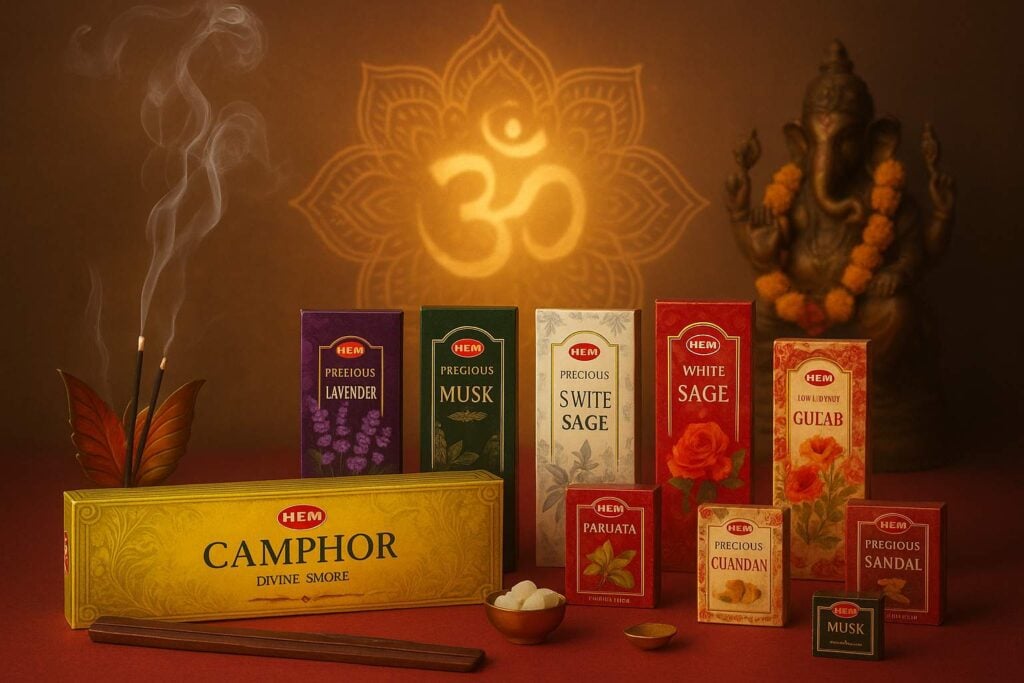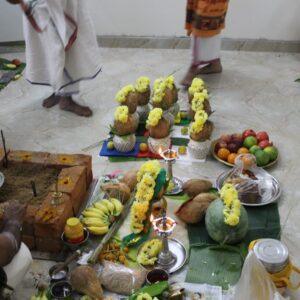
Incense is more than a sensory indulgence—it’s a bridge between the earthly and the divine. In Hindu pooja rituals, the use of incense plays a vital role in sanctifying the environment, calming the mind, and symbolising our offering to the gods. From agarbatti to camphor, each scent carries meaning, and the rising smoke is seen as a prayer itself, reaching up toward the heavens.
Why Incense is Central to Hindu Pooja Rituals
Purification and Sanctification
The belief that sacred smoke can purify a space has been passed down through generations. The fragrance and smoke from incense are thought to drive away negative energy and leave behind an environment that is spiritually charged. Before beginning a Hindu pooja, many sweep the floor, sprinkle water, and light incense. It’s more than cleanliness—it’s energetic preparation.
In this way, incense becomes a silent purifier. At a time when spiritual and environmental cleansing intersect, the act of lighting a pooja stick is both ancient and relevant.
A Sensory Offering to the Divine
In Hindu pooja, the five senses are offered to the divine through sight (lighting a diya), touch (placing flowers), taste (naivedya), sound (bells, chanting), and smell (fragrance). Offering scent through incense is seen as a subtle, invisible prayer, carried upward on smoke, reaching the gods.
Just as one offers flowers or sweets, fragrance too is a gift of devotion. It signifies reverence and love in a form that transcends language.
Focus, Stillness, and Inner Presence
Ask anyone who meditates what helps them focus, and many will mention scent. Fragrance, especially during worship, helps anchor the mind. It signals to the brain that it’s time to be still. The use of a familiar incense before every pooja creates a sensory ritual and your mind begins to associate that particular scent with peace and inward connection.
Lighting an incense stick prepares the space and the self. A breath in quiets the mind, and a breath out expands the spirit.
Symbolism of Incense in Hinduism
Incense in Hindu rituals is deeply symbolic. It represents:
- A Link Between Devotee and Divine: As the smoke rises, so do prayers. Incense becomes a medium between the physical world and the spiritual realm.
- Cleansing of Space and Mind: Fragrance purifies the outer environment and also calms inner distractions, aligning the devotee for worship.
- A Gift of Faith: Offering fragrance is an act of surrender, a symbolic expression of bhakti (devotion).
- Representation of the Five Elements: The act of burning incense combines earth (stick), air (smoke), fire (flame), water (used in preparation), and ether (scent) – a holistic connection to nature.
Types of Incense Used in Hindu Pooja
Each fragrance holds its own significance and is associated with specific deities or spiritual intentions.
- Sandalwood (Chandan) Incense Stick: Deeply linked with Lord Shiva, sandalwood calms the senses and represents purity and detachment.
- Jasmine (Mogra) Incense Stick: Favoured in the worship of Goddess Lakshmi, this floral scent symbolises beauty, abundance, and peace.
- Frankincense Incense Stick: Associated with Goddess Kali, frankincense transforms fear and evokes inner strength.
- Lavender Incense Stick: Used in prayers to Goddess Parvati, lavender encourages emotional healing and harmony.
- Camphor Incense Stick: A sacred symbol of Lord Shiva, camphor purifies the space and signifies the dissolution of ego.
The Significance of Numbers: How Many Incense Sticks to Burn
The number of incense sticks used during pooja often has symbolic meaning:
- One: Simplicity and singular focus during a brief or daily pooja.
- Three: Represents the trinity of Brahma, Vishnu, and Mahesh.
- Five: Signifies the five elements—earth, water, fire, air, and ether.
- Seven: Used in more elaborate rituals, representing completeness and spiritual awakening.
There are no strict rules—intention matters most. Choose a number that resonates with your rituals.
Final Thoughts
Whether it’s the grounding aroma of sandalwood or the uplifting fragrance of jasmine, incense brings pooja rituals to life, cleansing the space, calming the mind, and deepening our spiritual connection.
Each fragrance is a tool for devotion, a way to welcome divinity into your home.


